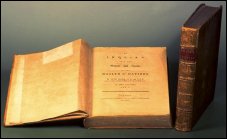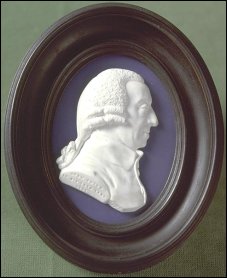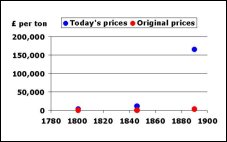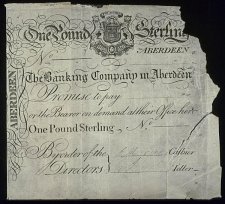| The Peterhead whaling trade |
|
What was whaling worth to Peterhead? The processes of supply and demand determine the success and viability of any industry, and the Greenland whale fishery was no exception. In the early years of Peterhead's involvement in whaling the demand for oil was high, particularly for soap production and for industrial, domestic and street lighting. However, the introduction of coal gas and the development of mineral oils in the mid-1800s led to a marked lessening of demand. However, the loss of these markets was offset to a very large extent by the expansion of the textile industry, particularly the Dundee jute industry, which used huge amounts of whale oil. Over the 100 years that Peterhead was involved in whaling the average price for oil was about £35 per ton (£2,200 at today's prices). There was of course great variation from year to year as supply and demand rose and fell. Oil was fetching £46 (£1,600) per ton in 1801, £21 (£893) in 1807, £60 (£3,200) in 1830, £25 (£1,364) in 1846, £54 (£2,665) in 1865, £42 (£2,117) in 1881 and £20 (£1,288) in 1890. Whalebone (baleen) was also a fickle market, utterly dependent upon the vagaries of the fashion trade. The result was a very volatile price with whalebone selling for £65 (£2,533) per ton in 1800, £200 (£10,915) in 1846 and £2550 (£164,297) in 1890. Although it could be used for a wide variety of products, from umbrella spokes to upholstery stuffing, its main use had always been in corsetry and for the manufacture of crinolines and hooped skirts. The demand peaked in the late 1890s as tiny waists became the very height of fashion and by the end of the century whalebone was fetching over £2,500 over ton (£164,000 at today's prices). Soon, however, the introduction of high tensile steel corset stays was to finish-off the demand for whalebone. Seal skins also varied greatly in value, fetching, for example only 1s 3d (£3.22) in 1838 but 9s 6d (£22.04) by 1860. The importance of the whaling industry to the overall economy of the town of Peterhead is difficult to evaluate. The numbers of vessels working changed from year to year and the earnings of the different vessels differed greatly, one from the other, and from season to season. The whaling ships were expensive to build and each represented a considerable investment of capital. In 1803 the Resolution (2) cost almost £8,000 (£389,000 at today's prices) while the Eclipse (2) cost the Gray family over £14,000 (£637,000) in 1867. From 1830-34 there were 11 whalers operating and earning an average of £3,400 (£181,300 at today's prices) each. Yet, in 1859, 28 vessels averaged under £1500 (£75,600). These averages of course hide the reality suffered or enjoyed by individual captains. Many ships came back empty but still had to meet overheads of £1,000-£2,500 to cover the costs of repairs, debt payments and wages. At the other extreme the Superior made £6,000 (£270,500) in 1820, the Resolution £11,000 (£408,250) in 1814, and the Eclipse (2) paid for herself when she made £14,230 (£680,500) from 11 whales and 4,700 seals in 1878. Clearly some individuals made great fortunes but others lost them. Links |




